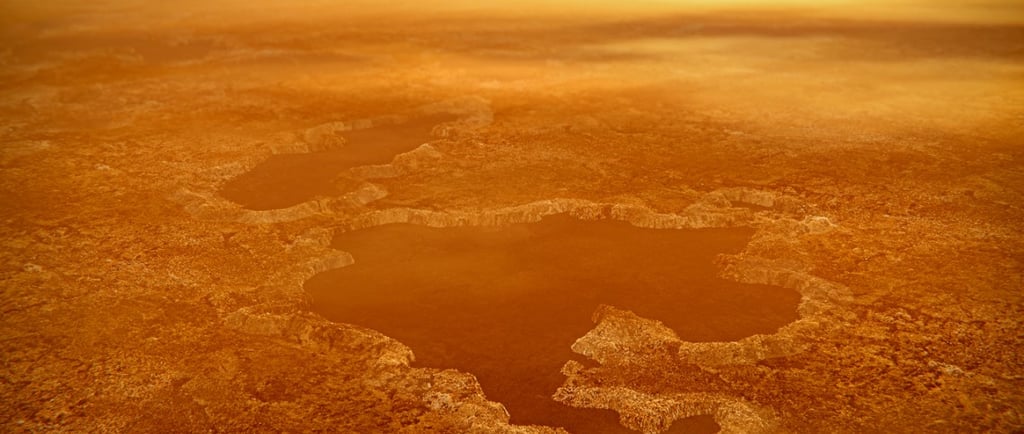Inside the Methane filled Titan


Introduction to Titan's Unique Environment
Titan, Saturn's largest moon, is a world unlike any other in our solar system. Draped in a thick, yellowish haze, it presents a captivating and enigmatic atmosphere primarily composed of nitrogen. One of the most intriguing aspects of Titan is its weather patterns, which include dynamic clouds and rainfall. This combination of factors offers a glimpse into the complexity of extraterrestrial climatic systems.
The Methane Cycle on Titan
Central to understanding Titan's atmospheric and surface processes is its rigid methane cycle. Similar to Earth's water cycle, this cycle consists of the evaporation of methane, formation of clouds, and subsequent precipitation. Observations reveal significant cloud convection occurring in Titan's northern hemisphere, particularly over vast regions filled with methane lakes and seas. This cyclical behavior plays a crucial role in shaping Titan's landscape, providing insights into the moon's geological activity and climatic variations.
Recent Discoveries and Their Implications
Recent data from the James Webb Space Telescope has unveiled a key carbon molecule in Titan's atmosphere. Identifying such molecules is essential for understanding the intricate chemical processes occurring in this unique environment. The existence of these compounds not only enhances our knowledge of Titan but also provides valuable information on the moon's potential for harboring prebiotic conditions. Scientists are enthusiastic about what these discoveries mean for astrobiology, shedding light on the possibilities of life beyond Earth.
The exploration of Titan continues to provoke further questions and hypotheses regarding its mysterious composition and atmospheric dynamics. As we advance our technological capabilities and refine our observational methods, Titan stands as a focal point for further research into the broader implications of celestial bodies that may mirror conditions on early Earth.
